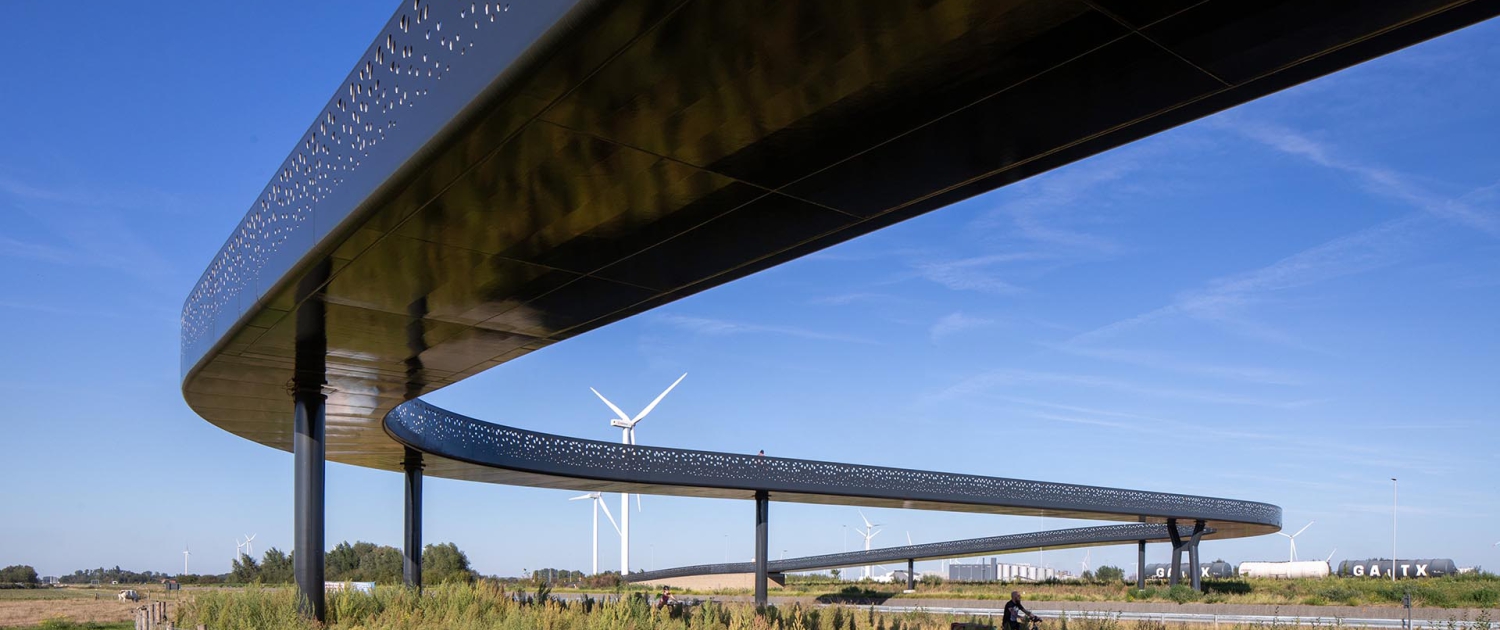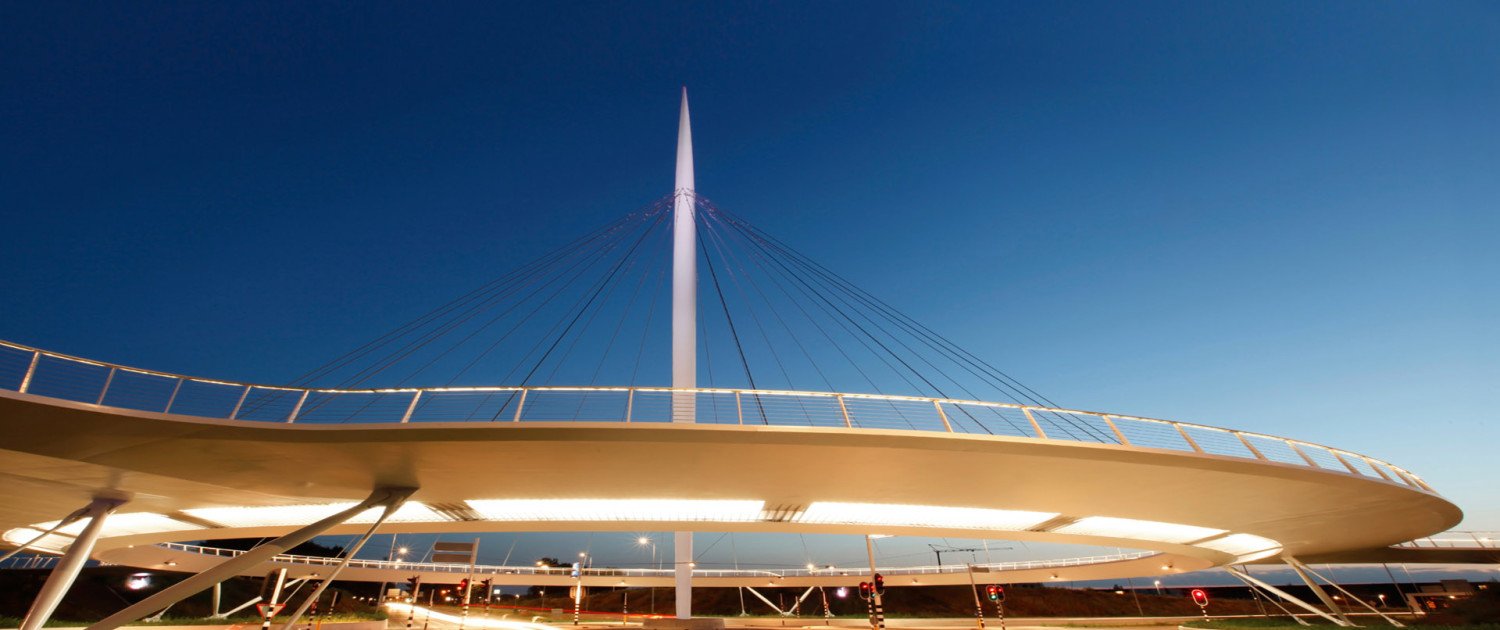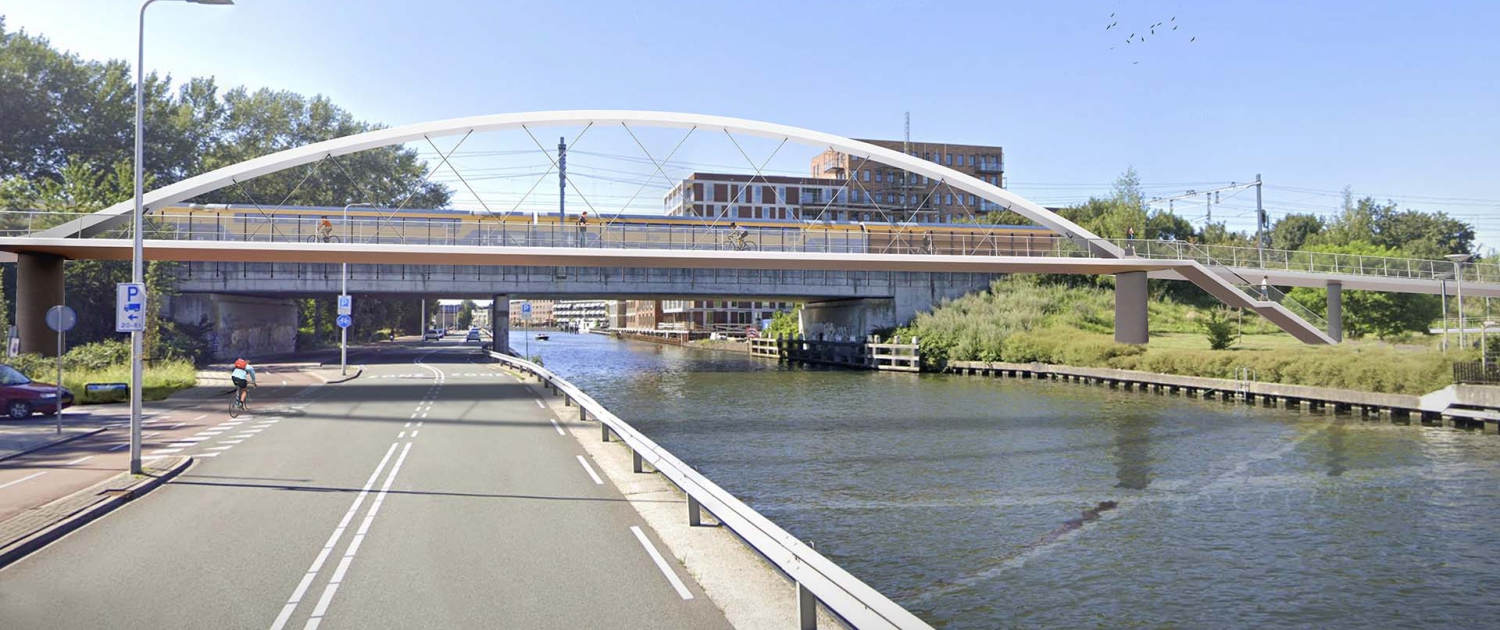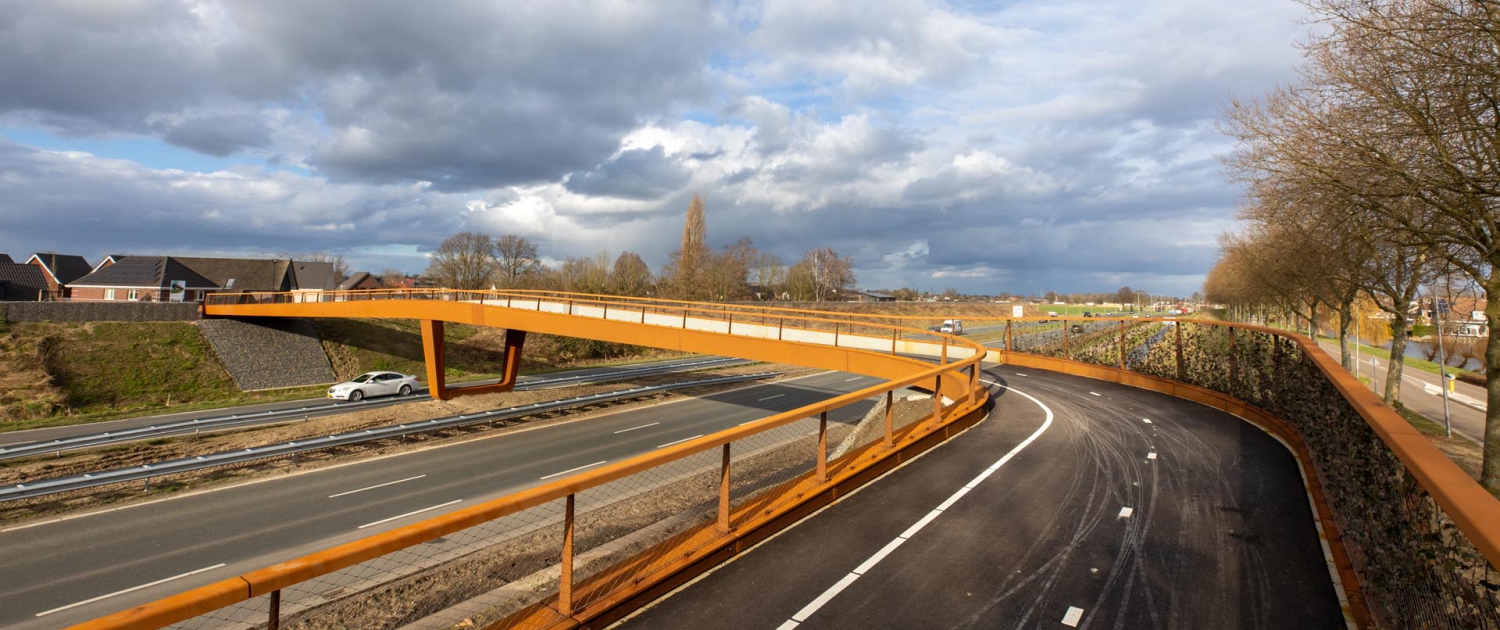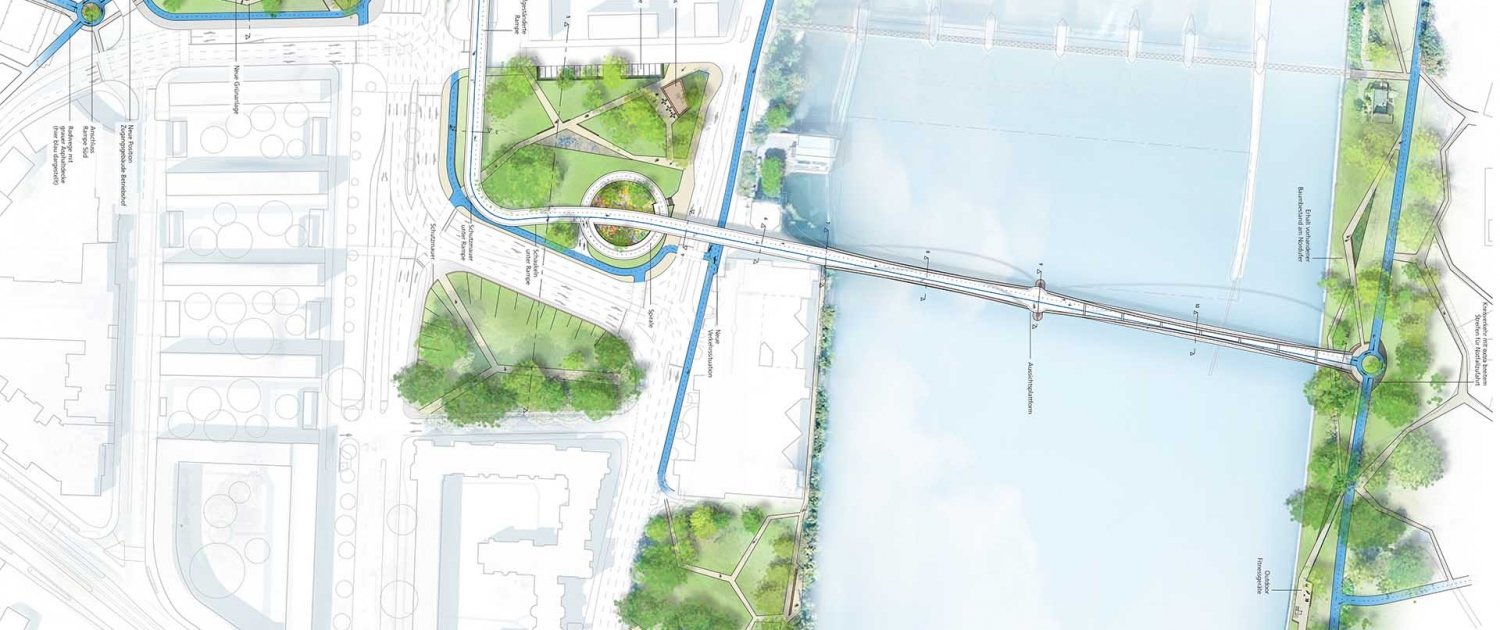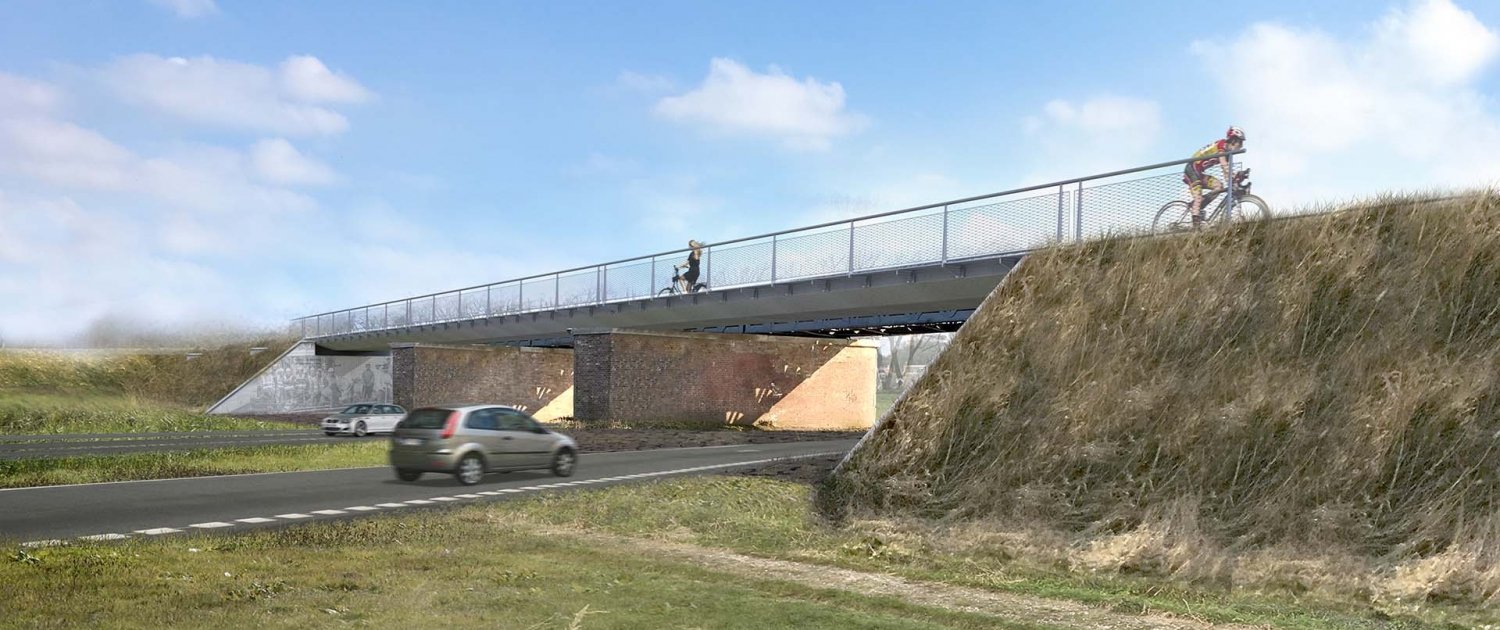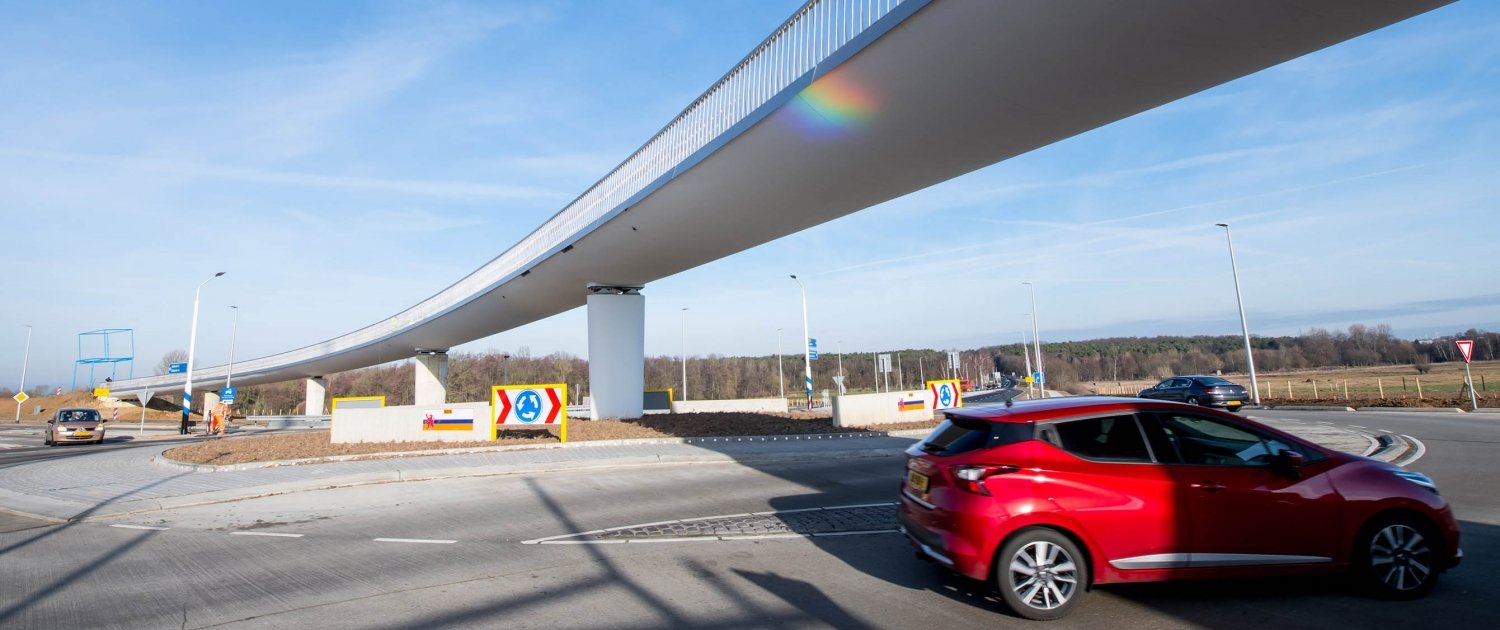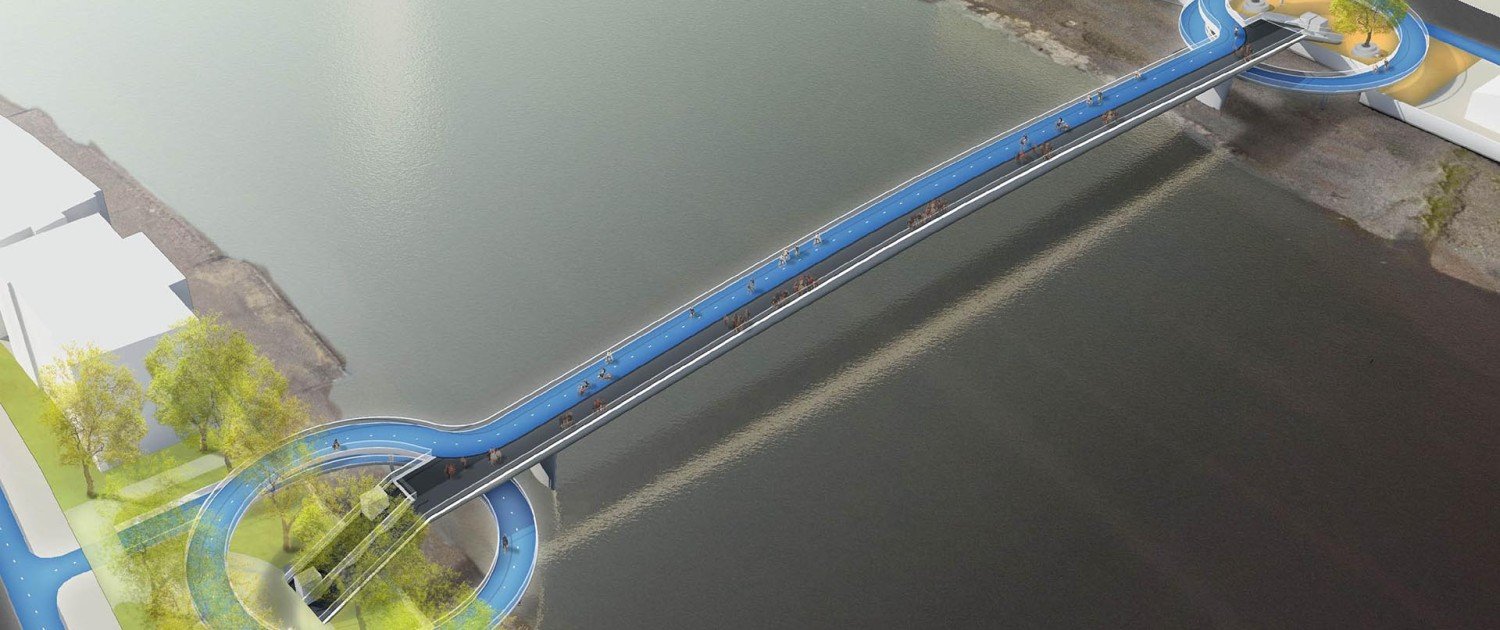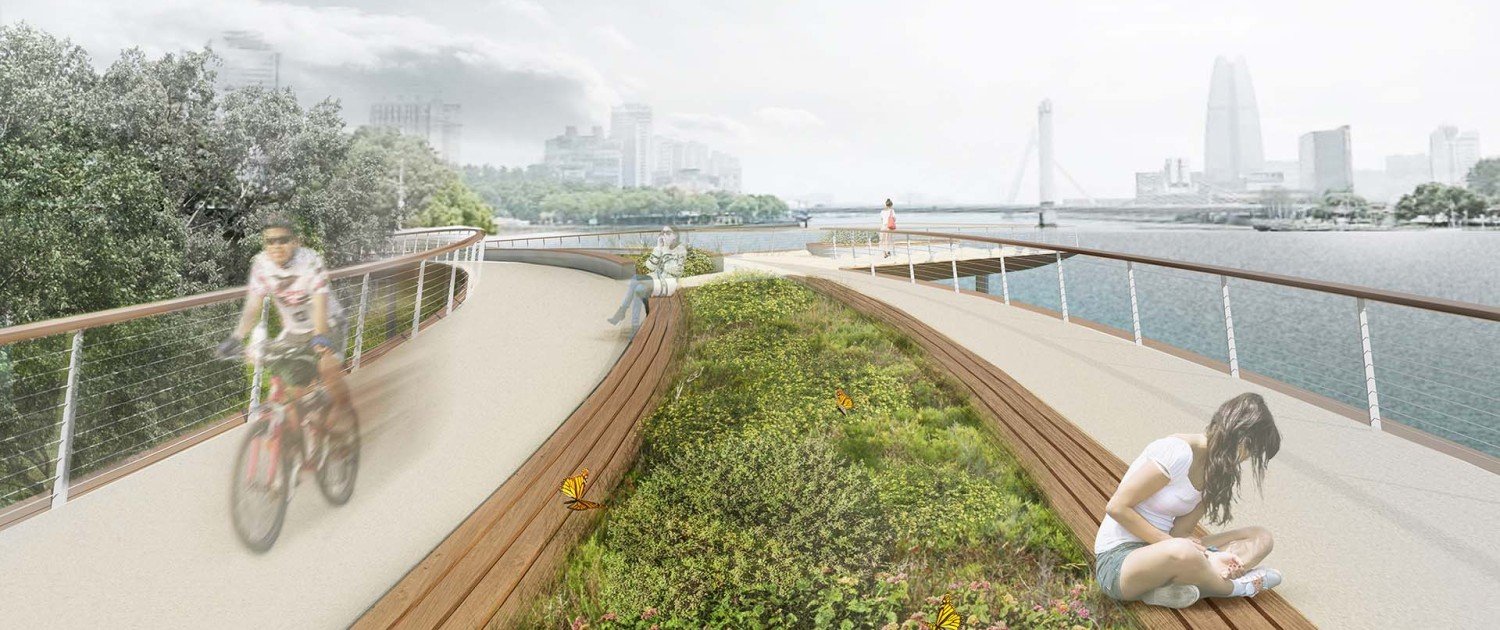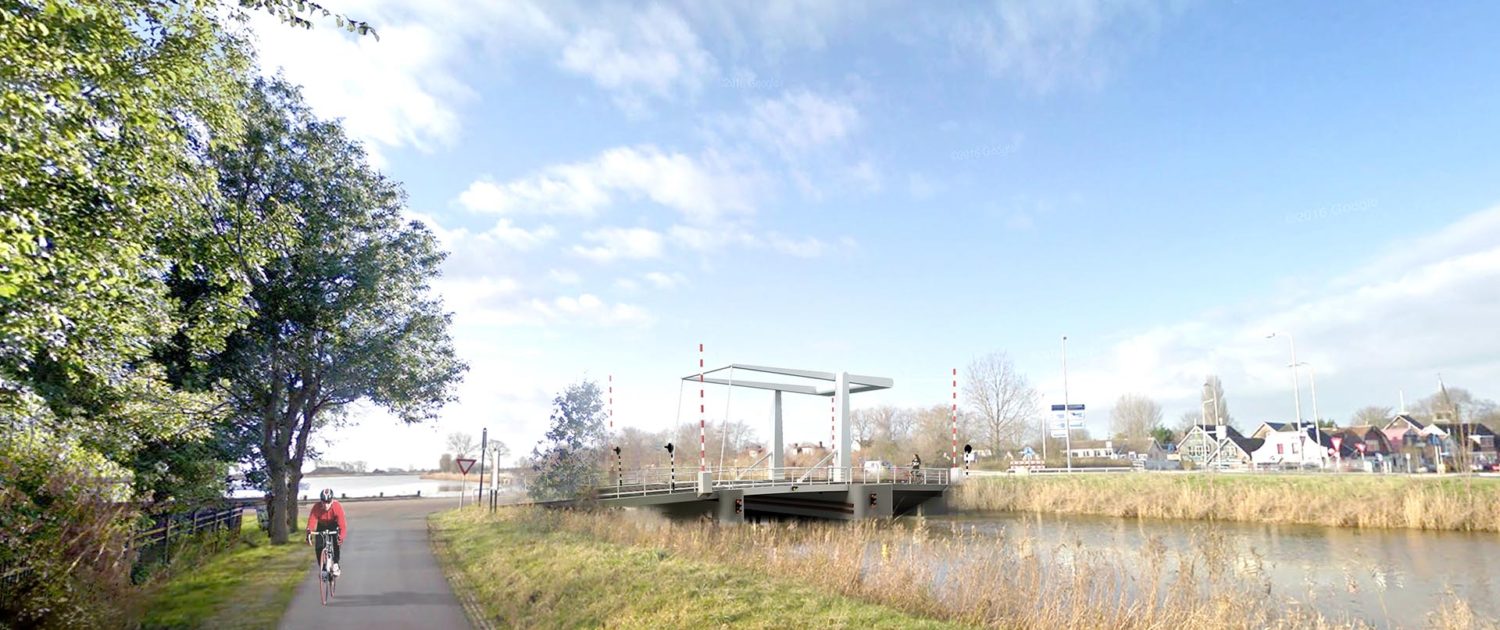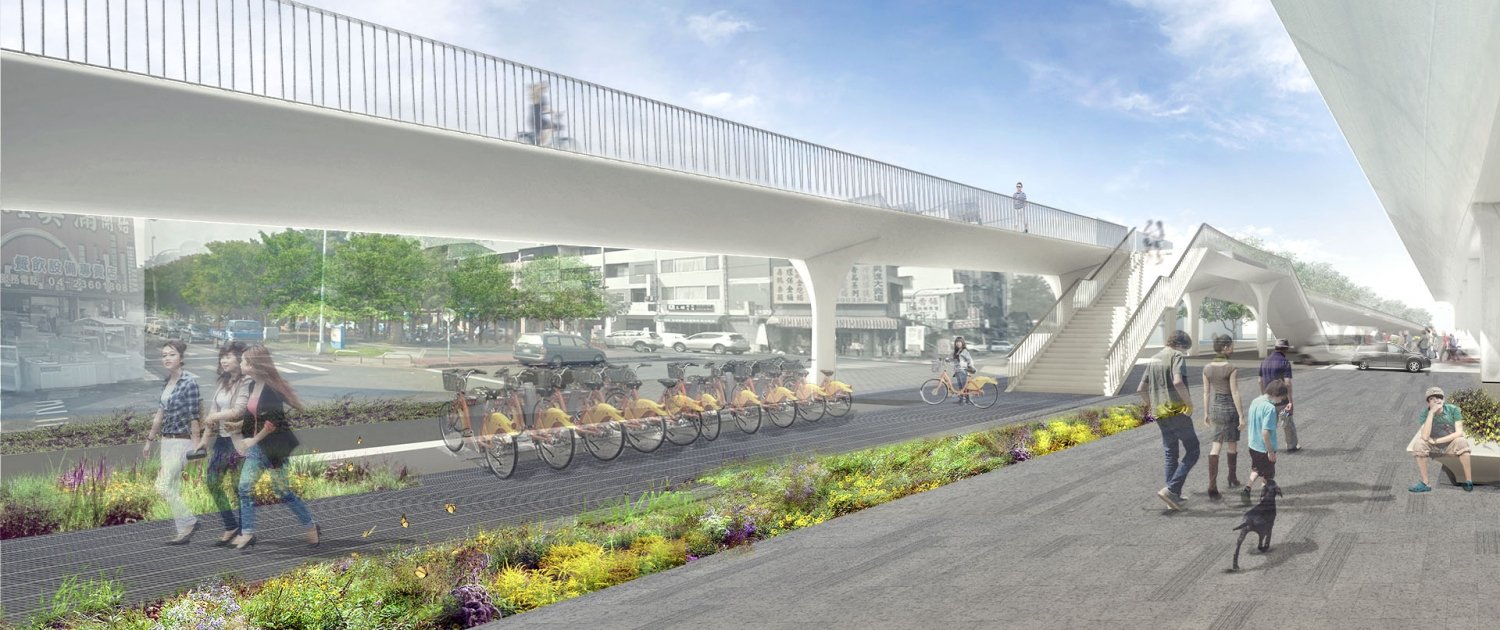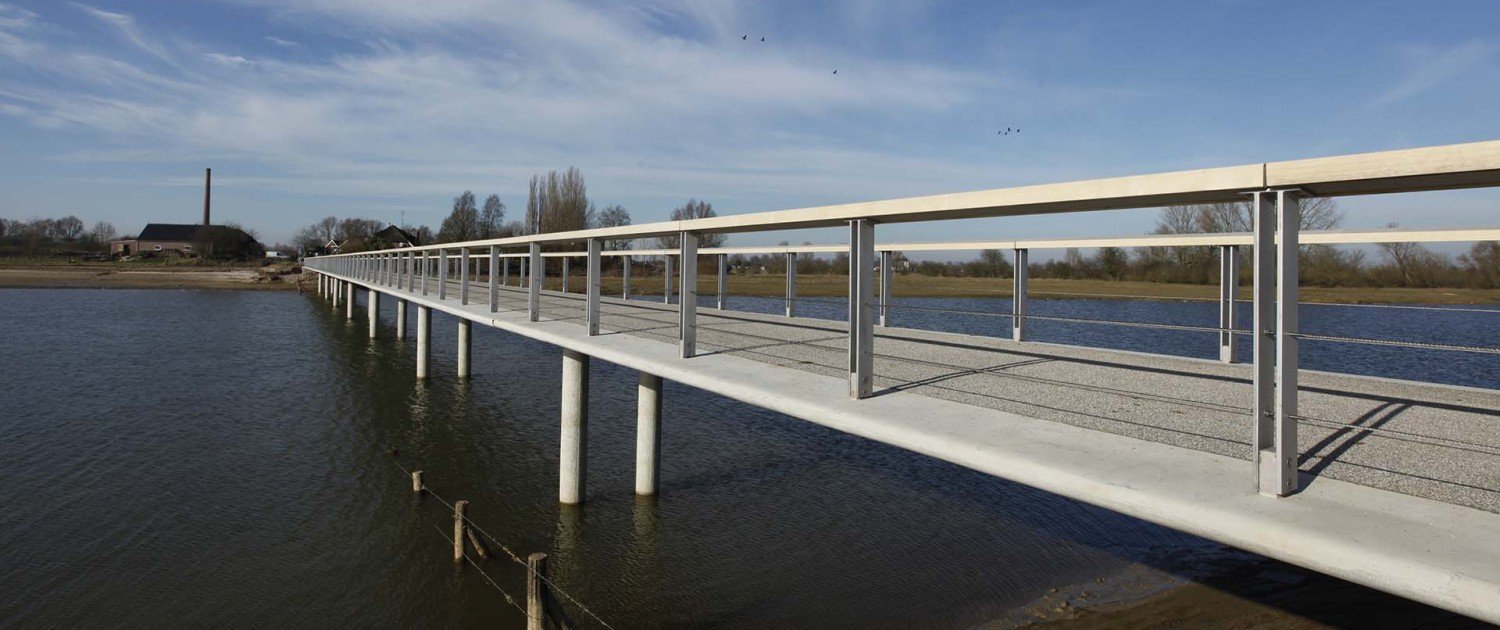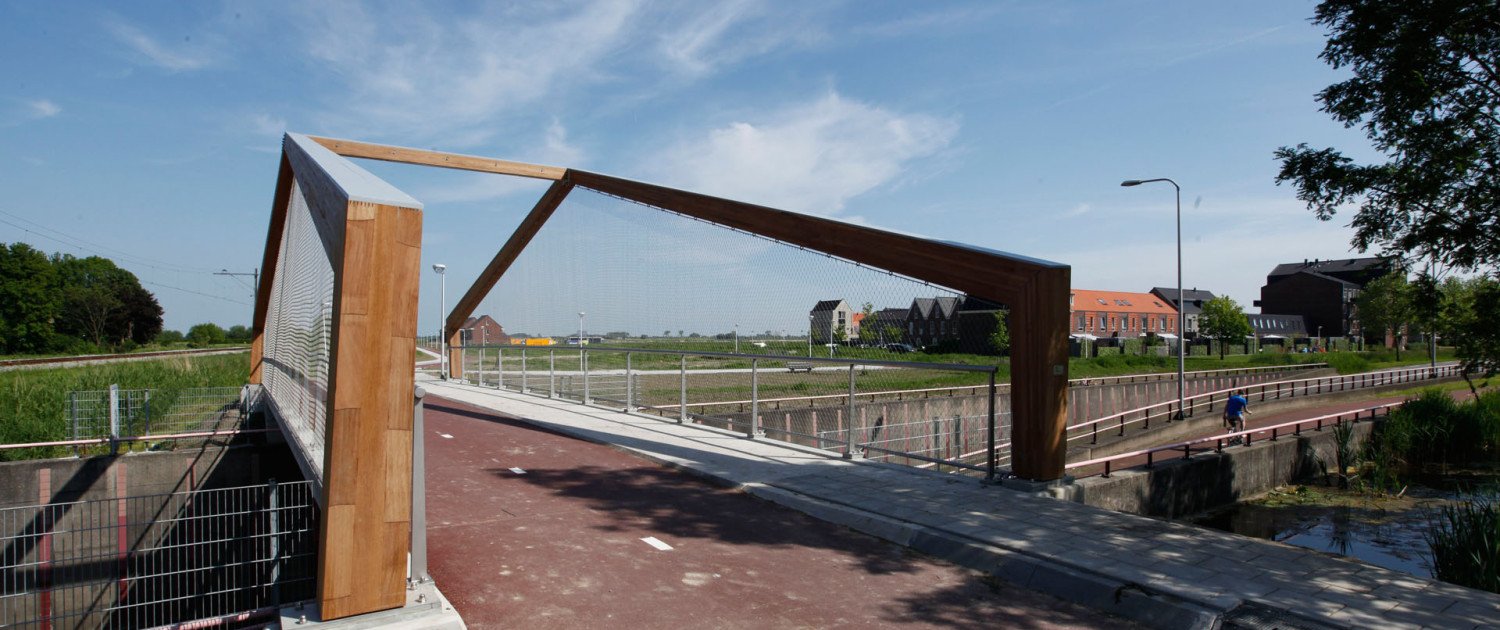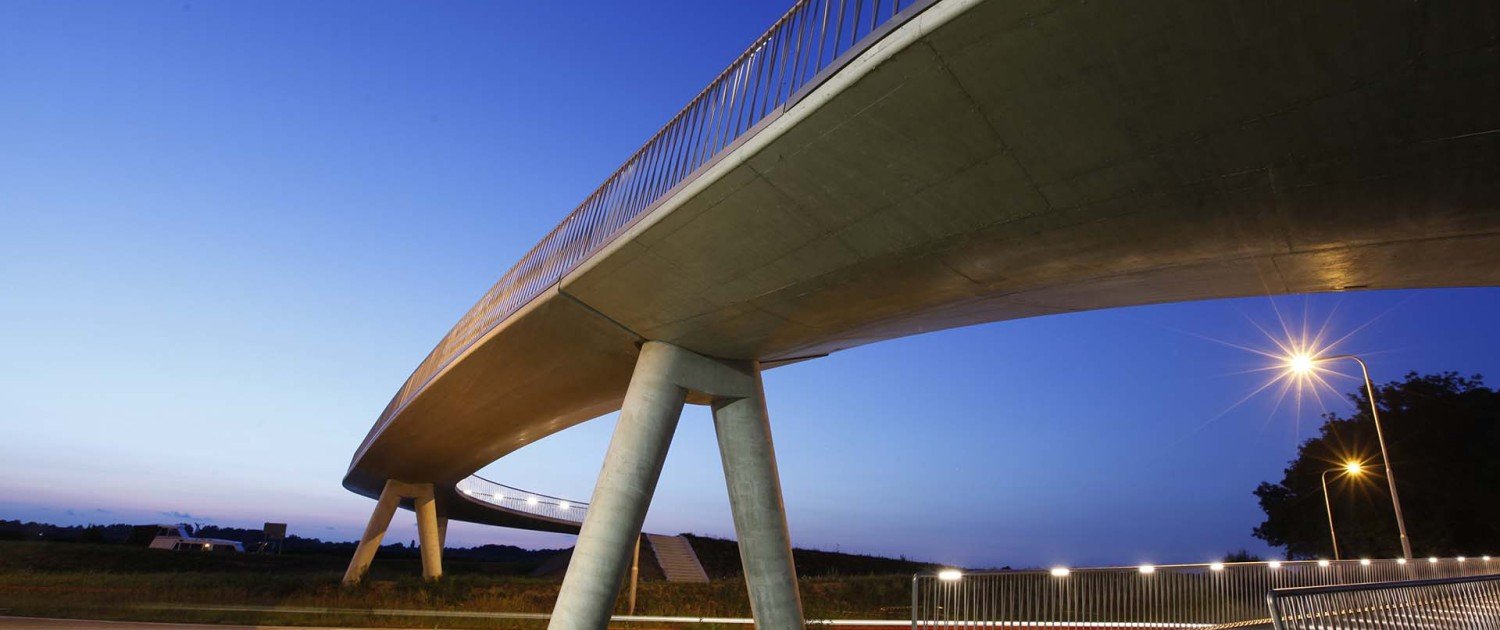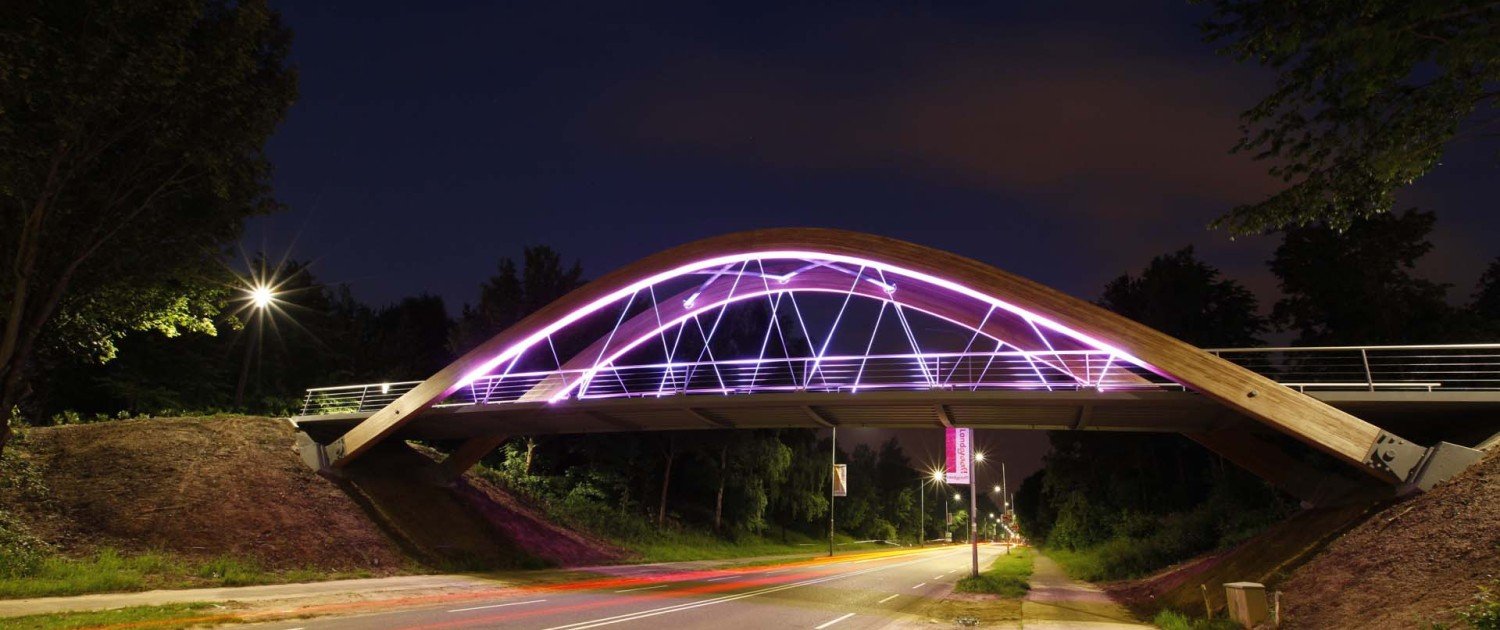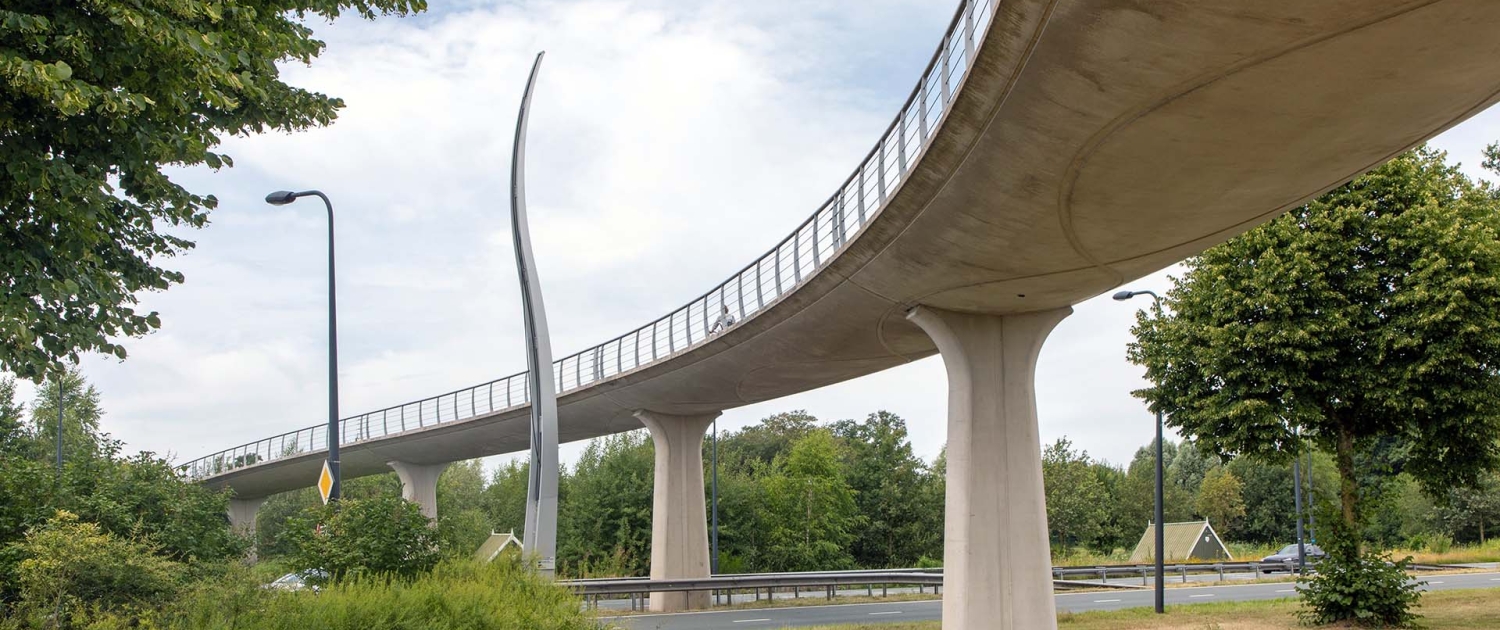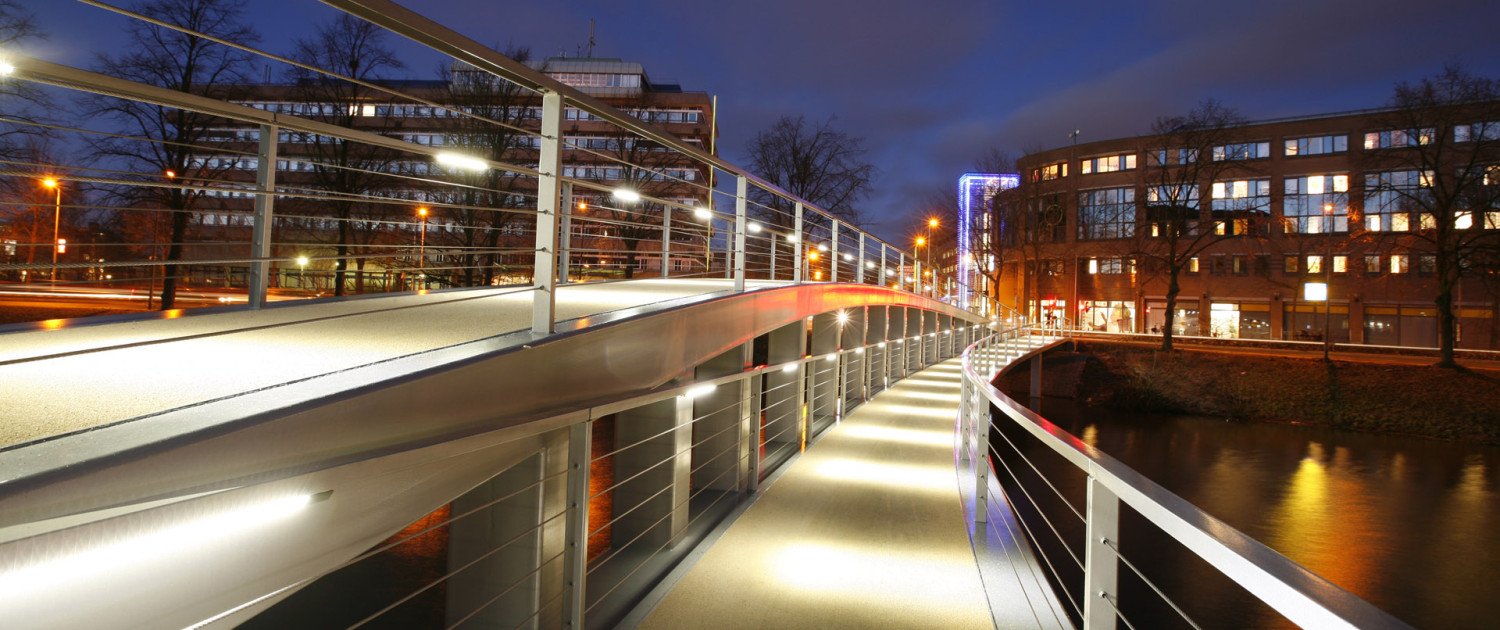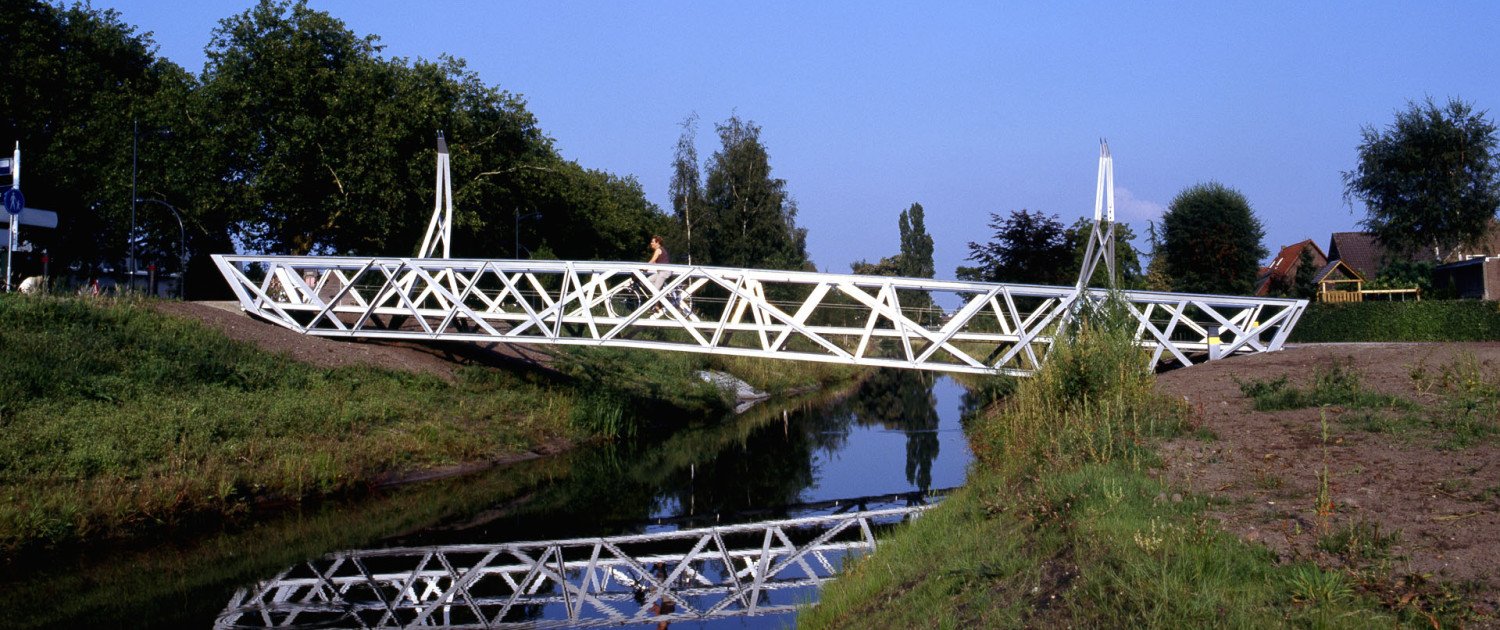connector
The city of Rijswijk is situated on both sides of a canal, with the canal acting as a barrier for cyclists and pedestrians especially. Therefore, the City Council asked ipv Delft to research possible locations for a new bridge across the canal. This extensive study resulted in a proposal for a movable bridge, which we were then asked to design.
design
We designed a swing bridge with an 18-metre high pylon placed to the side of the canal. This structural concept made it possible to have a slender, asymmetrical deck that’s extremely slim at the far end.
specifications
size: l=35 m | h=18 m
building costs: 2.4 million euro
project location
more information?
call Johan Büdgen:
+ 31 15 750 25 74
project team
Sietse Cieraad
Johan Büdgen
Ronald Rozemeijer
Rob Kruizinga
Interview with designer Johan Büdgen
Senior designer and project leader Johan Büdgen was closely involved in the design and realisation of this eye-catching bicycle bridge. Netherlands based American journalist Diane Daniel asked him all about the design and how it came about…
What was the brief for this bridge and how did you address it?
The municipality of Rijswijk wanted a new bicycle connection across the Rhine-Schie Canal to improve the bicycle network. They had chosen a general area and asked us to further look into the possibilities, taking into account issues such as creating logical and effective road connections. There also was the issue of traffic flow both for vessels and cyclists and pedestrians. If the bridge is too low, cyclists can’t use it a lot of the time because it has to be open for boats. If it’s too high, cyclists might be put off from using it because of the sheer height difference they have to overcome.
In general, the shipping industry prefers a fixed bridge for vessels to easily pass underneath. In this particular situation however, the long ramps needed to accomplish the 7-meter vertical clearance would simply not fit within the surrounding area. The bridge we designed is medium low with a 3-meter clearance, allowing the majority of recreational vessels to pass. Its height means it has to open several times a day however.
You designed a bridge that pivots open, which is not very common. What inspired that choice?
Overall designing and constructing a bridge requires making a lot of choices on many different levels. Technical solutions, design and spatial integration for instance. Here, the main purpose was to have a minimal impact on the surroundings. Therefore a slim bridge was needed. You get a slim bridge by choosing an efficient structural concept and making a well-thought-out design. As an added bonus, a slim and efficient bridge requires significantly less material, which of course positively influences the overall costs.
The idea is you pivot the balanced bridge deck and you can turn it away very easily. It takes way less energy than lifting. The turning part of the deck is 50 meters in length, with a 35-meter cantilever. The deck is connected to the asymmetrically placed pylon with stay cables that keep it in balance when the bridge opens. This made it possible to have an asymmetrical deck that’s extremely slim.
What other aspects of the bridge design are you pleased with?
I always try to think about the little details. Like, what you see if you travel under the bridge. For instance in the middle of the bridge just above the water there is a stoplight for the boats. It’s very integrated in the bridge deck, functional but not distracting. I like those simple yet effective details that don’t draw attention.
How did you choose the lighting?
Although you need good lighting for cycling, you don’t want all kind of poles with lights on them because that’s very distracting. So we integrated LED lighting in the hand rails, which illuminates the bridge deck. The pylon, which is in the center of the cycle path, is spotlighted so it’s visible to bridge users. The integrated lighting enhances the bridge’s overall appearance at night as well and ensures it is recognizable from afar.
Although you worked for the municipality, you had many other stakeholders. Was that challenging?
I would say more than usual. There were the various local authorities; the provincial authority of South Holland, which owns the canal; the boatmen labor organization; recreational boaters; and also the bridge operators, who watch the automatic bridge and passing ships from a remote location. And of course we worked with local residents. In the early stages, I had a presentation for 100 people who live in the areas surrounding the bridge. They were all concerned and naturally wanted to know what the bridge would look like. As a designer, you have to take everyone’s wishes and demands into account and come up with a solution that everybody can be happy with, including yourself. That can definitely be a challenge.
Do you think you succeeded in designing something everybody was happy with?
A lot of people were worried about the bridge or even against it. The day it opened, a local man who had been openly against the bridge in the early stages now said he was satisfied. That’s a great feeling. A bridge is a success if it is used, and what you see is that there are several thousands of travelers a day using the bridge. People are talking about it and there’s regularly people photographing it. So, yes, I would say we succeeded. I honestly believe we made the most beautiful bridge we could within the context.


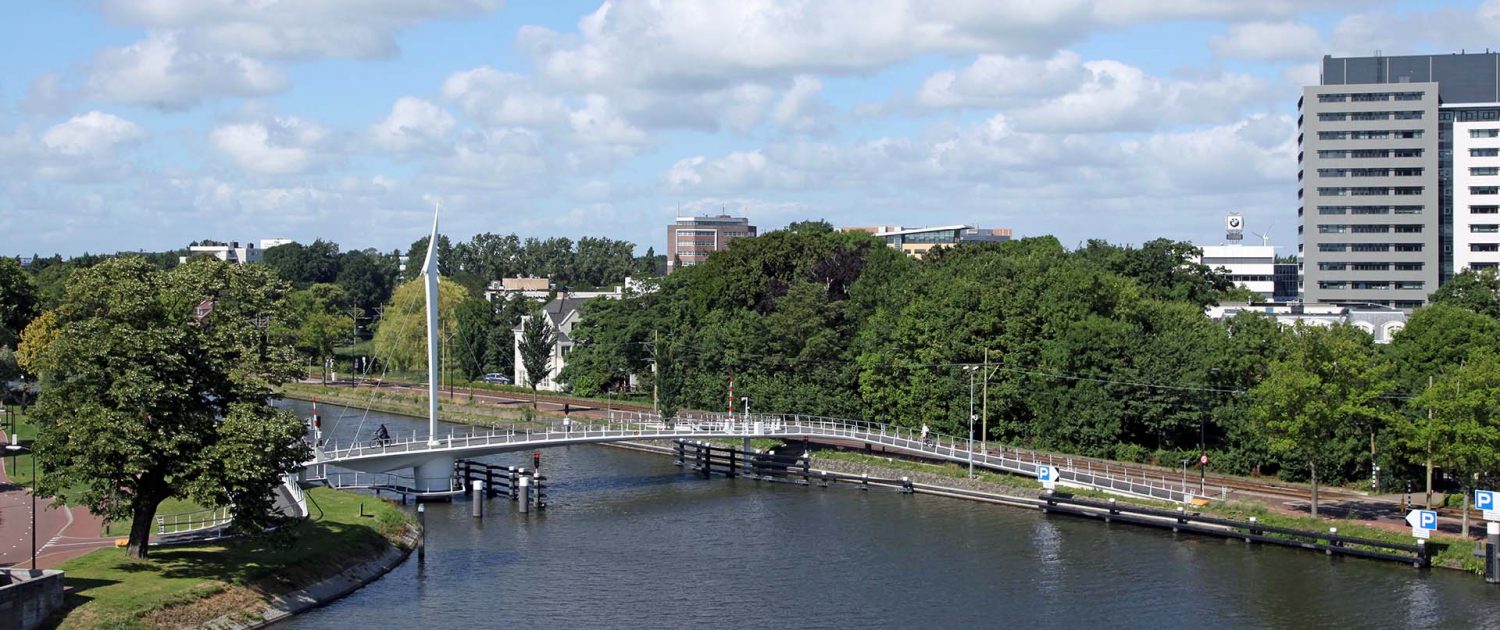

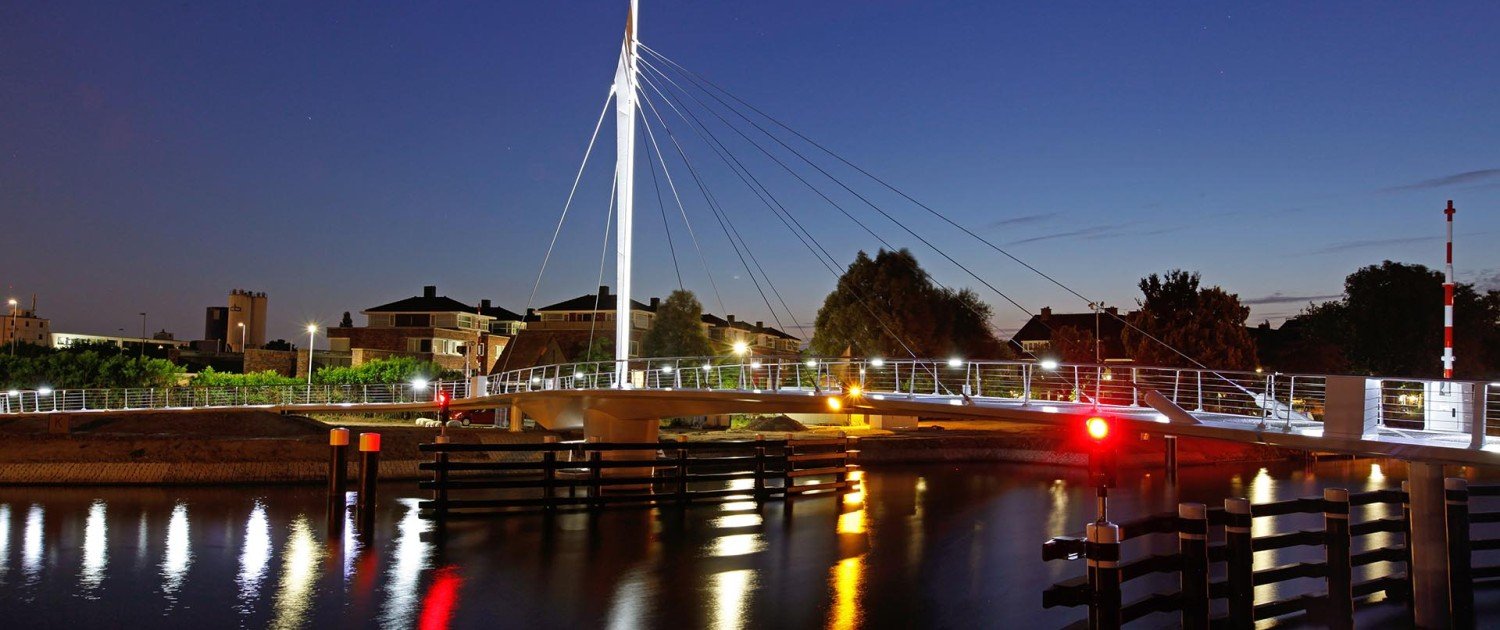
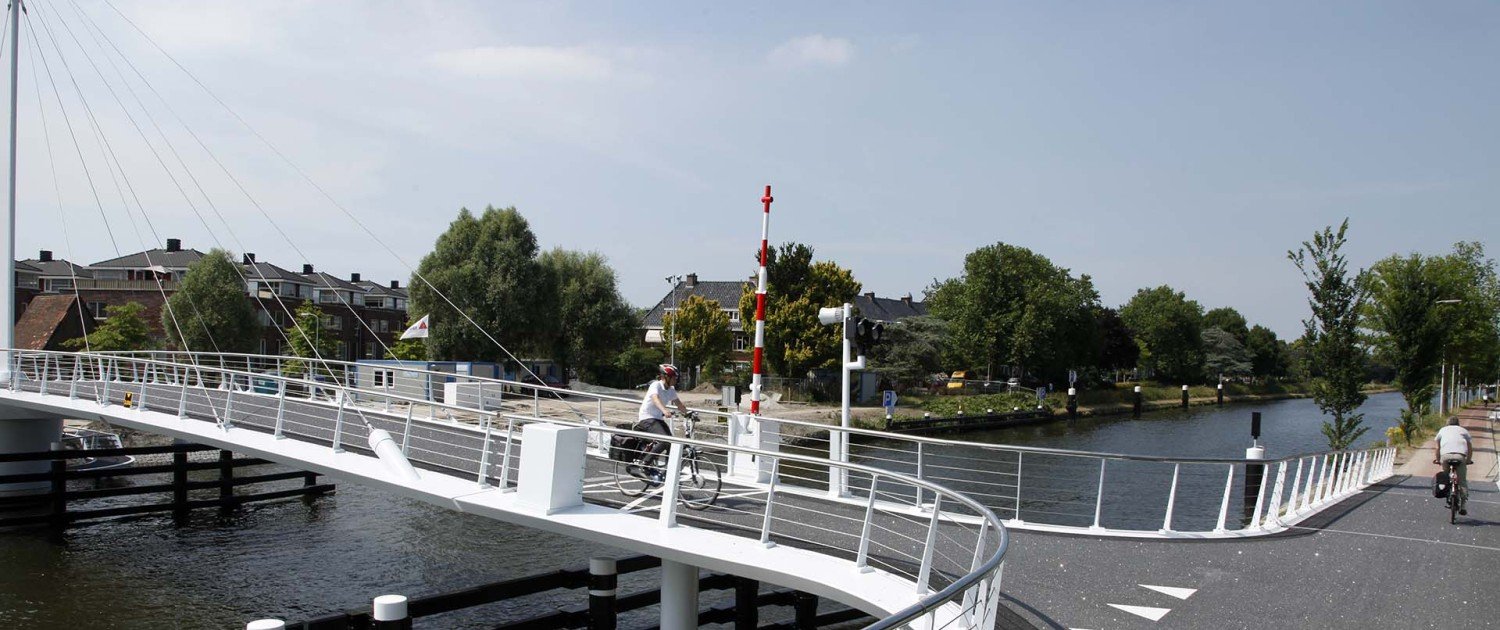
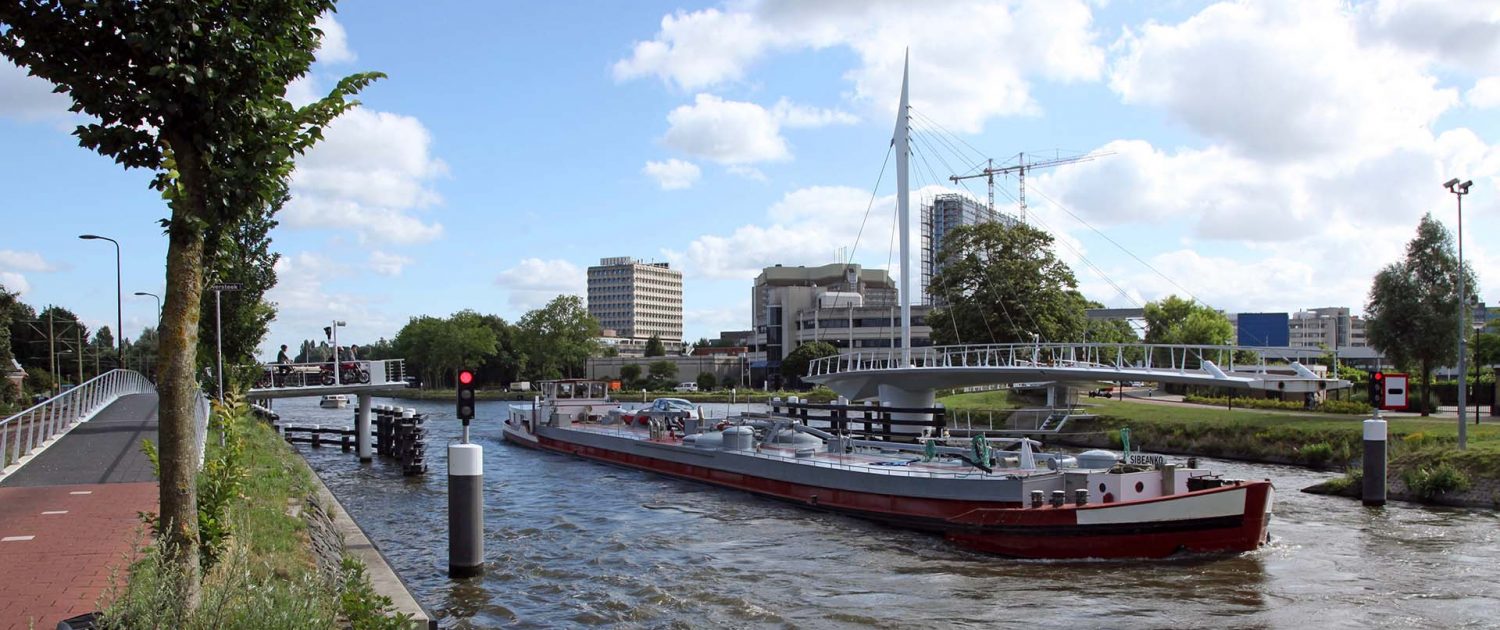
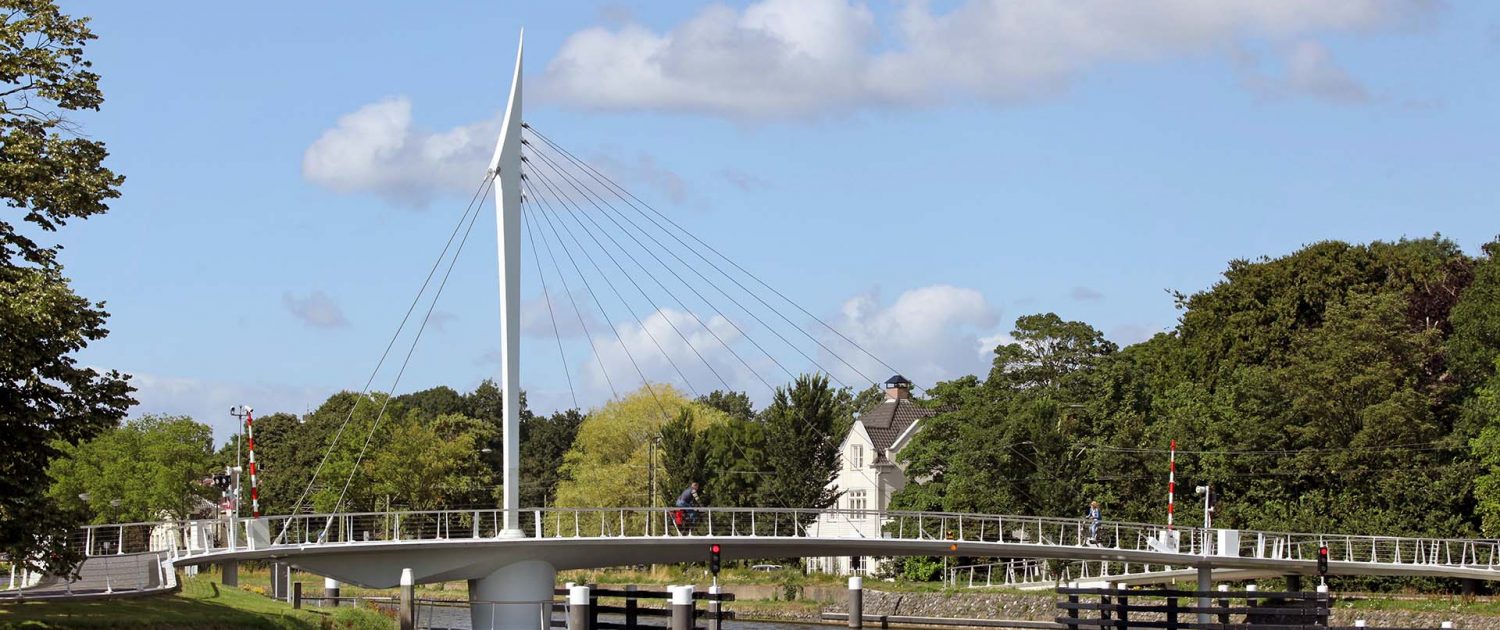
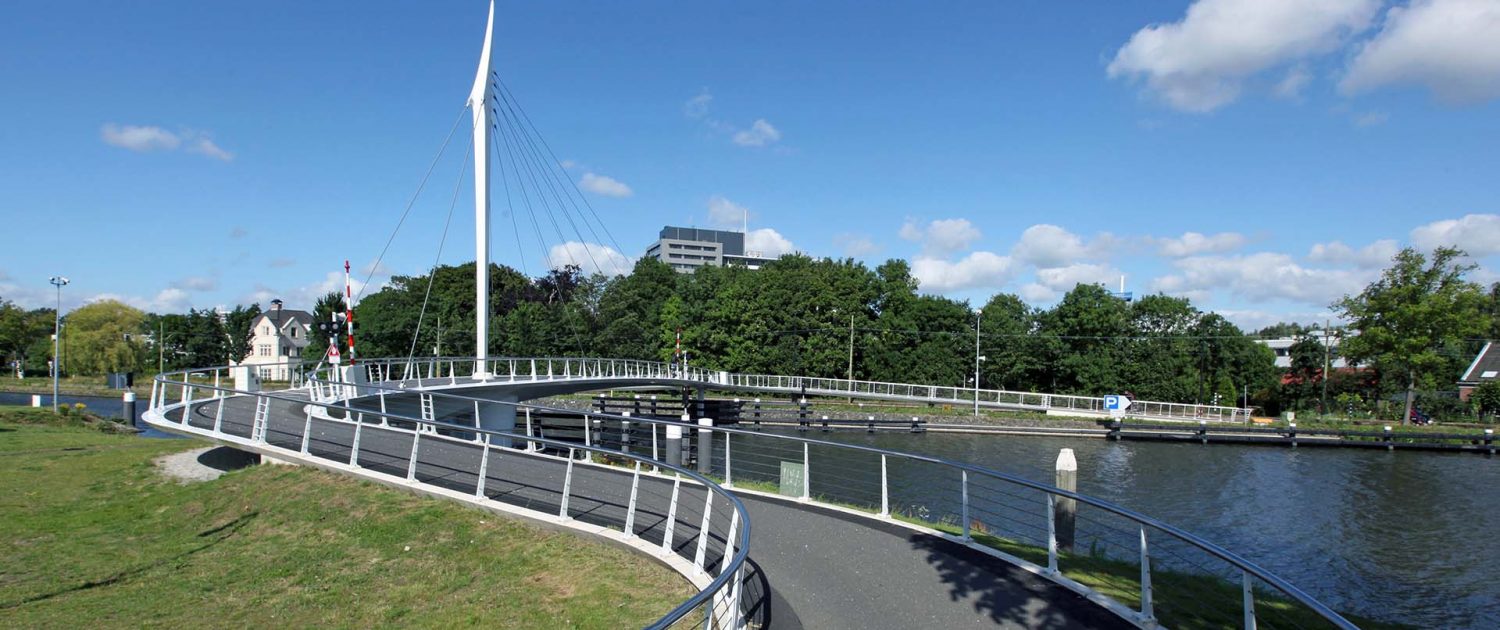
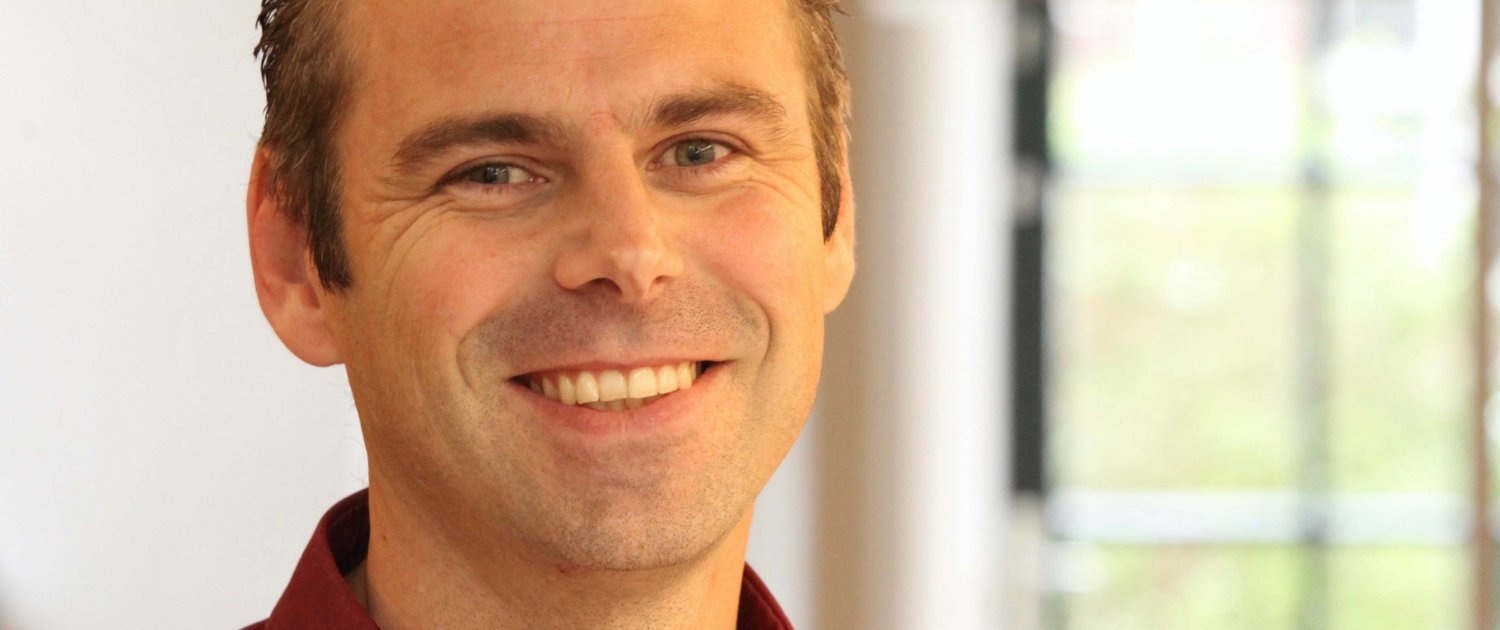
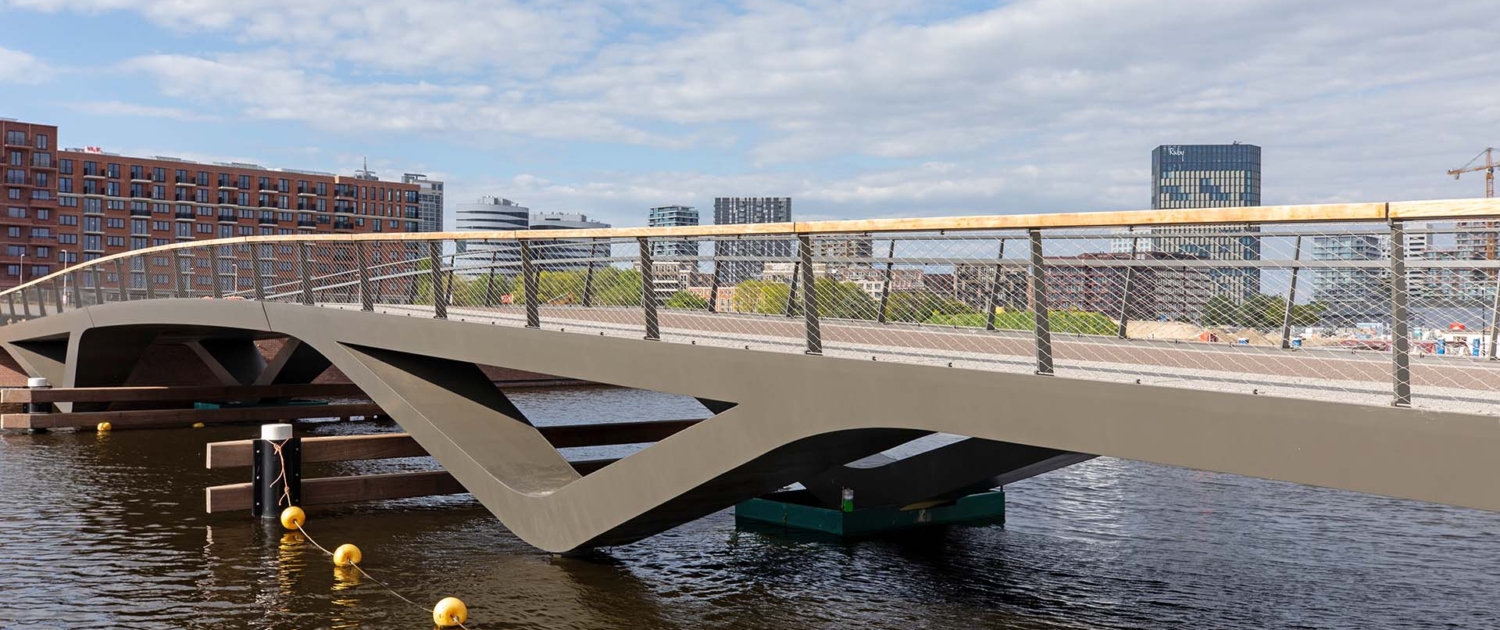


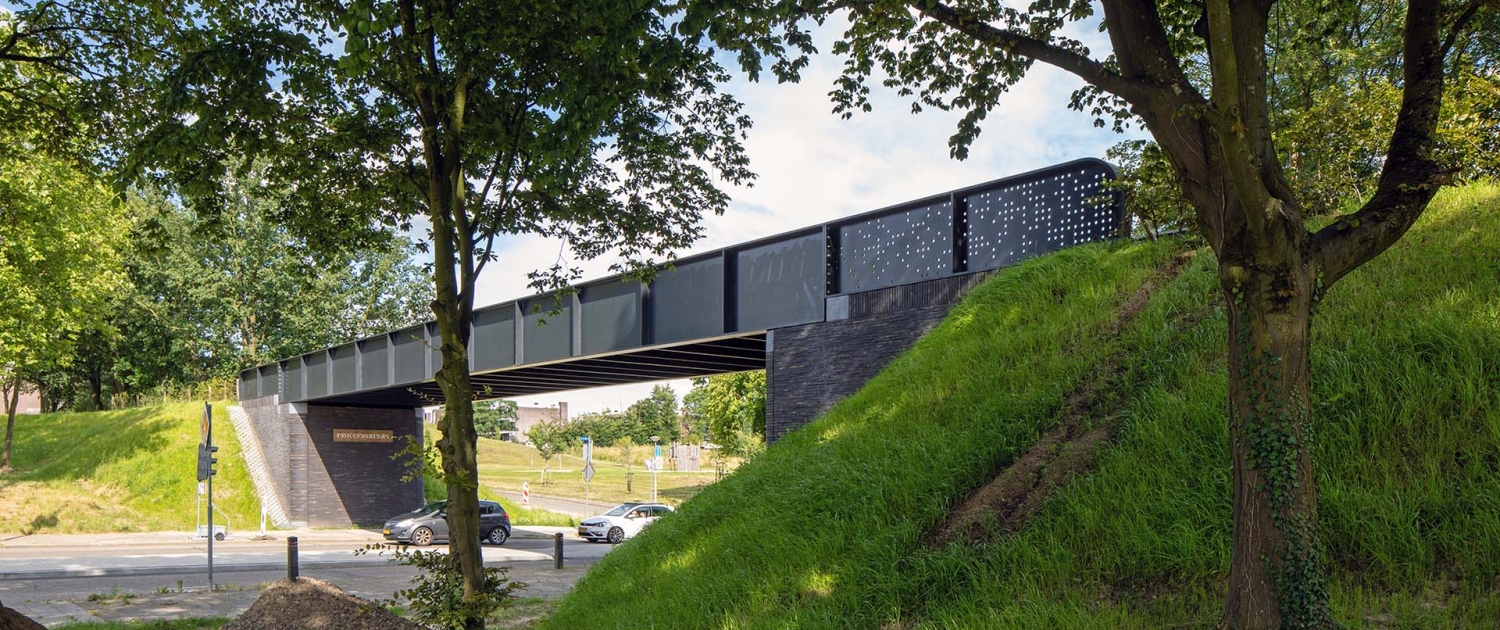
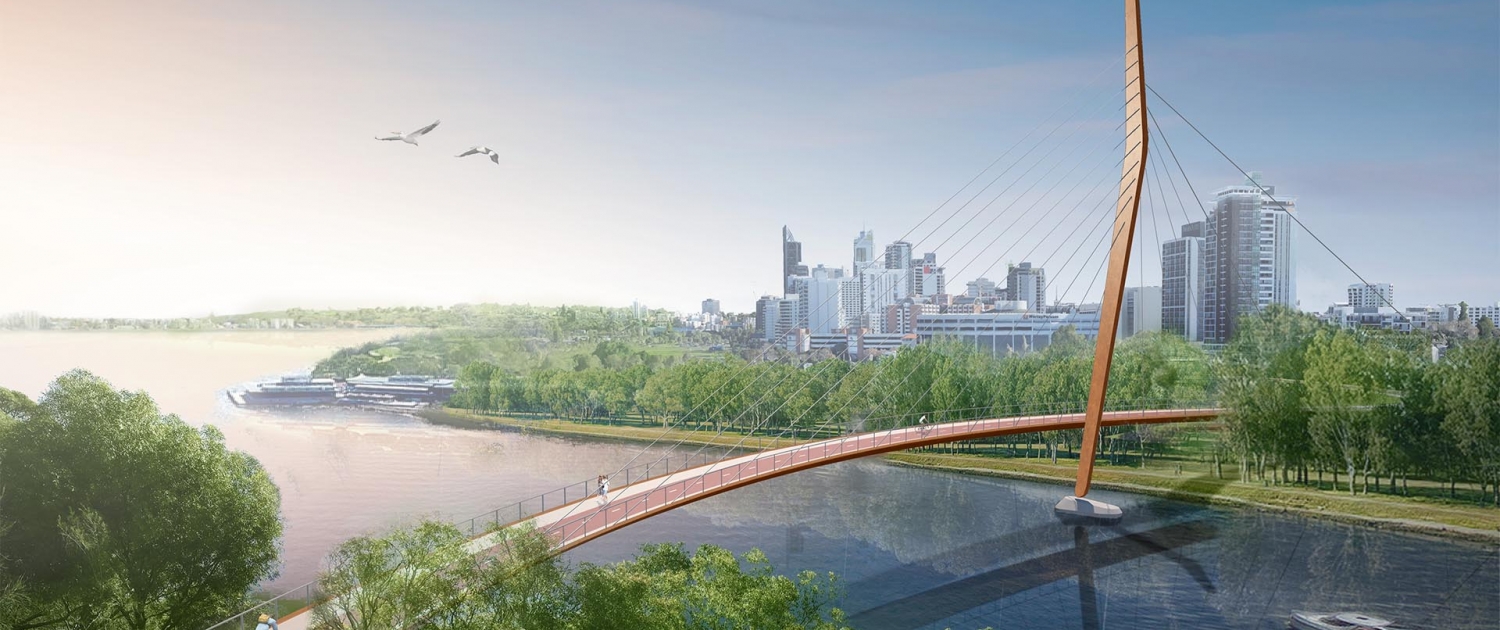
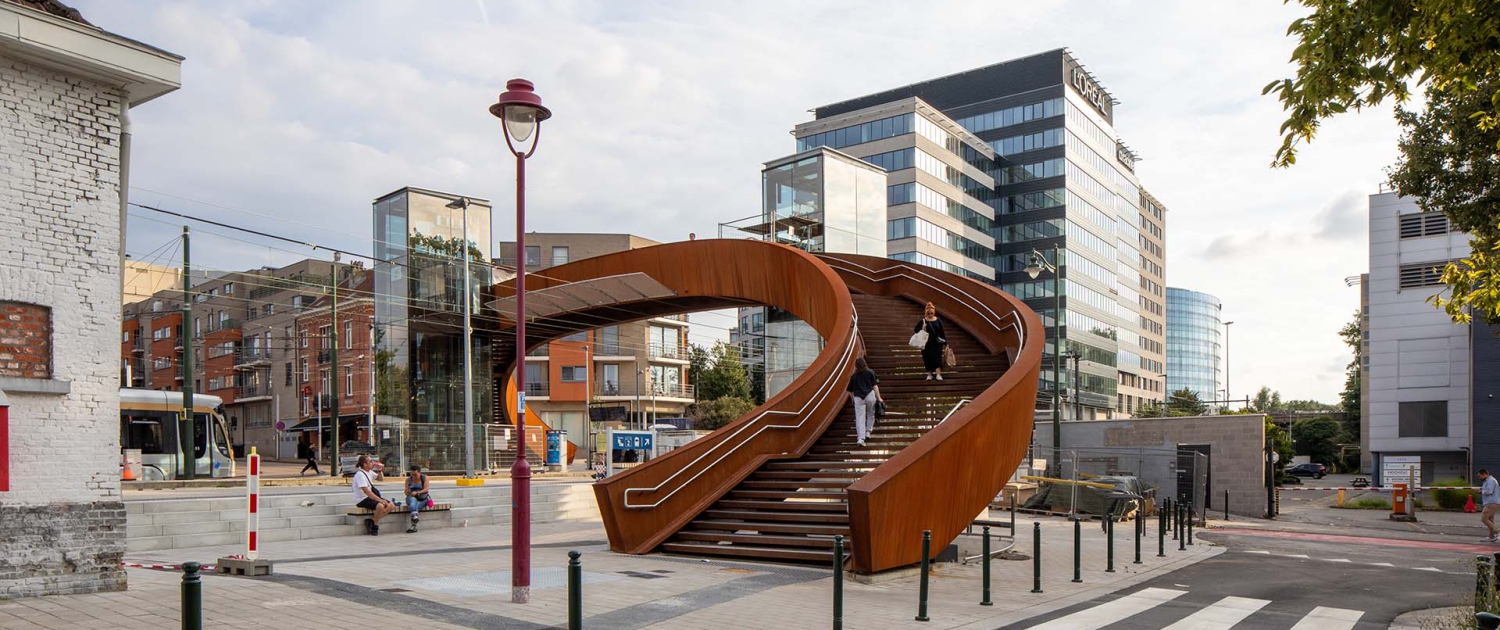
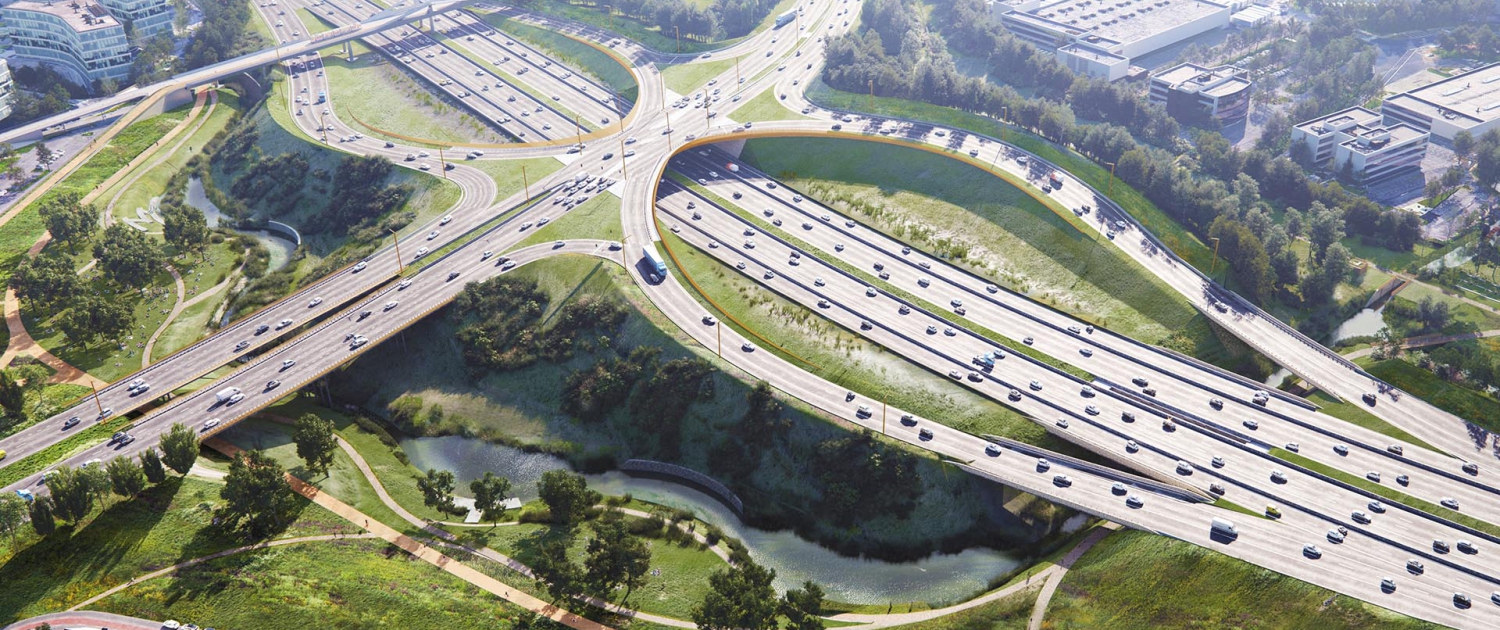 ipv Delft / image by Csaba Banati
ipv Delft / image by Csaba Banati